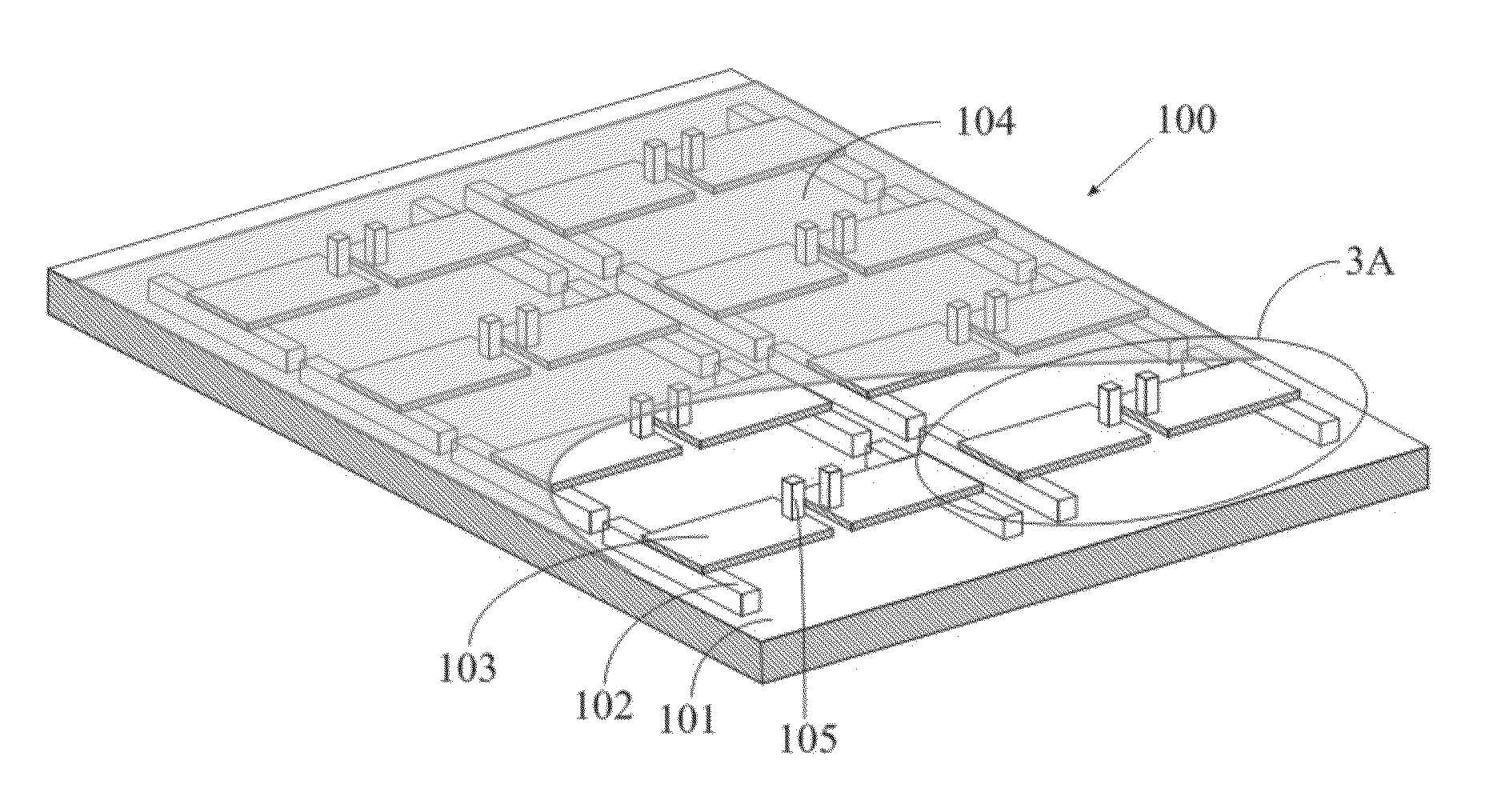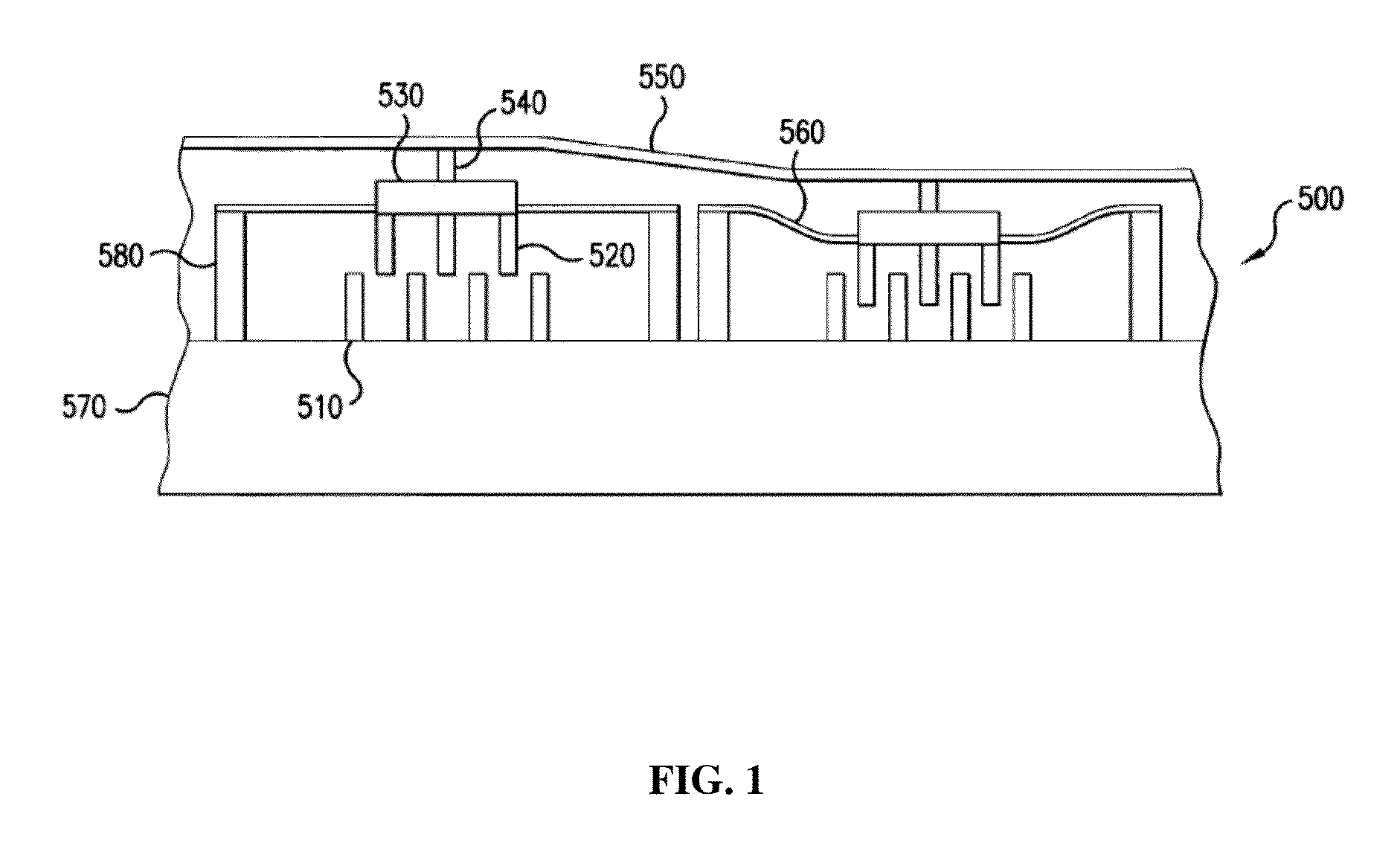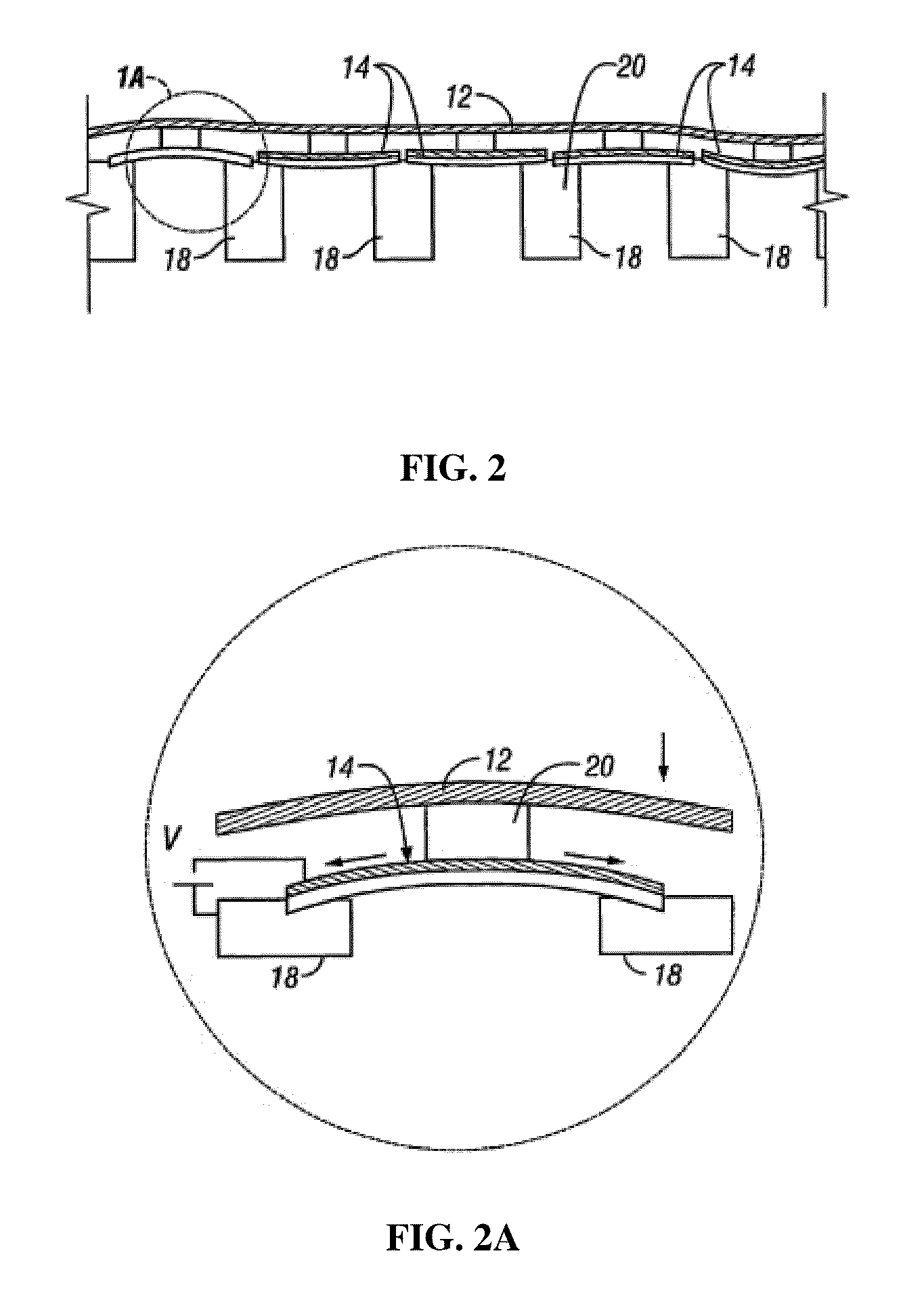MEMS hierarchically-dimensioned optical mirrors and methods for manufacture thereof
a technology of optical mirrors and hierarchical dimensions, applied in the field of adaptive optics, can solve the problems of low system reliability, and less than 1000 actuators, and achieve the effects of high device performance, high system reliability, and high stroke deformability
- Summary
- Abstract
- Description
- Claims
- Application Information
AI Technical Summary
Benefits of technology
Problems solved by technology
Method used
Image
Examples
Embodiment Construction
[0075]To provide an overall understanding of the invention, certain illustrative embodiments will now be described, including actuators and methods for controlling deformable mirrors. However, it will be understood by one of ordinary skill in the art that the systems and methods described herein may be adapted and modified as is appropriate for the application being addressed and that the devices and methods described herein may be employed in other suitable applications, and that such other additions and modifications will not depart from the scope hereof.
[0076]As discussed in the Background section above, the prior art MEMS deformable mirror membrane 550 shown in FIG. 1 (see U.S. Pat. No. 6,384,952) is equipped with electrostatic comb actuators 500. The actuators 500 include stator 510 and sliders 520. The sliders 520 are integrated with a slider top 530. Posts 540 attach the slider 520 via the slider top 530 to the deformable mirror membrane 550. Each post 540 will pull on the mi...
PUM
 Login to View More
Login to View More Abstract
Description
Claims
Application Information
 Login to View More
Login to View More - R&D
- Intellectual Property
- Life Sciences
- Materials
- Tech Scout
- Unparalleled Data Quality
- Higher Quality Content
- 60% Fewer Hallucinations
Browse by: Latest US Patents, China's latest patents, Technical Efficacy Thesaurus, Application Domain, Technology Topic, Popular Technical Reports.
© 2025 PatSnap. All rights reserved.Legal|Privacy policy|Modern Slavery Act Transparency Statement|Sitemap|About US| Contact US: help@patsnap.com



